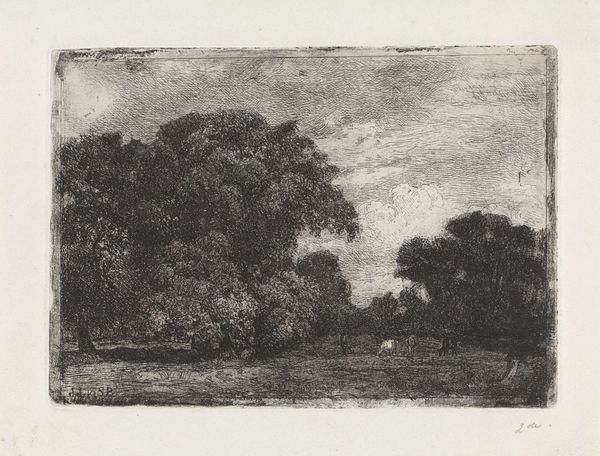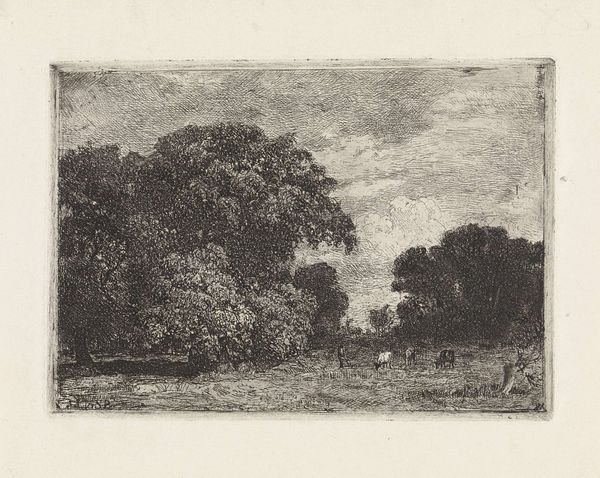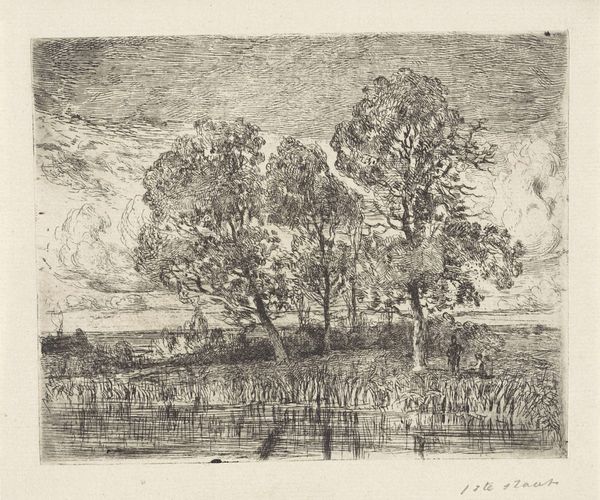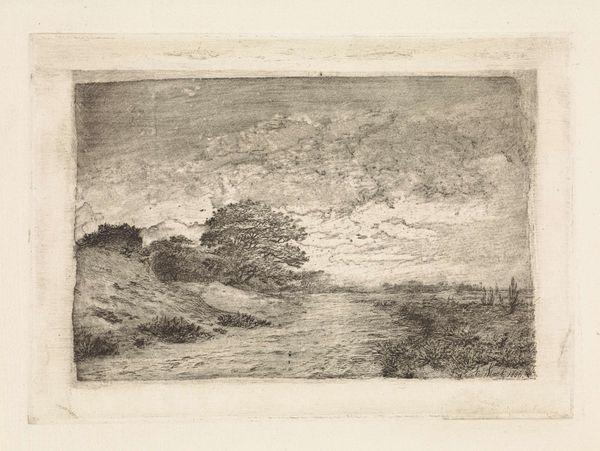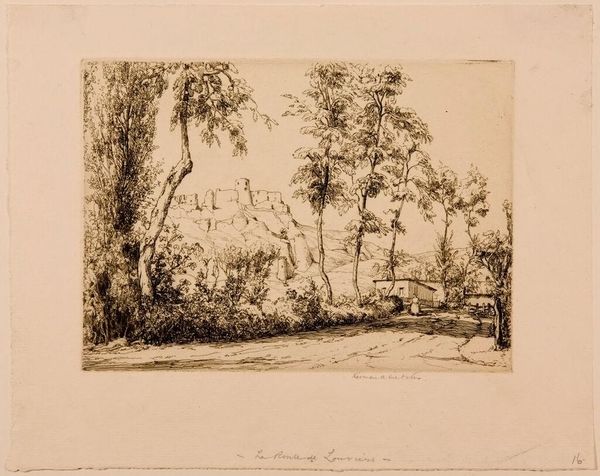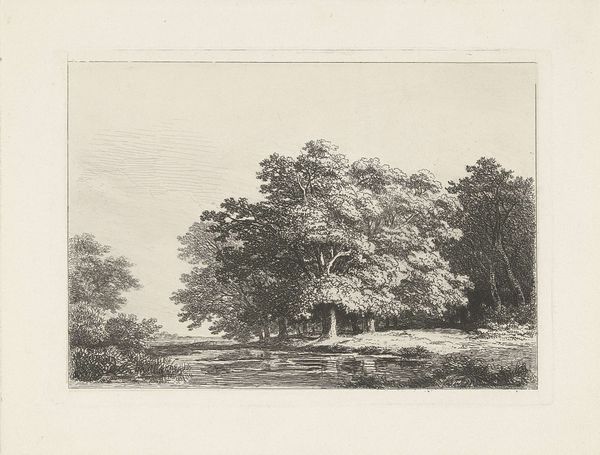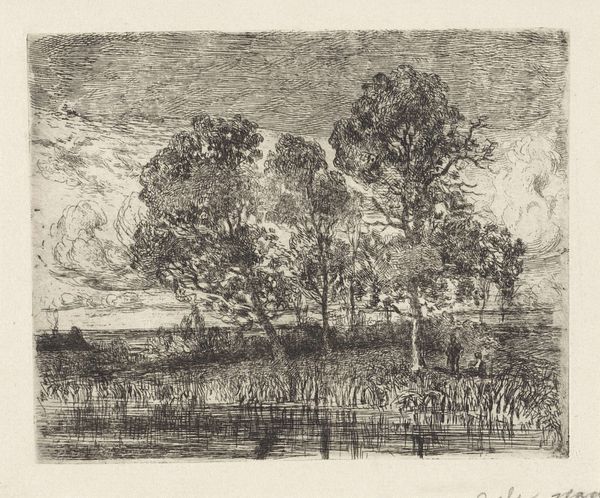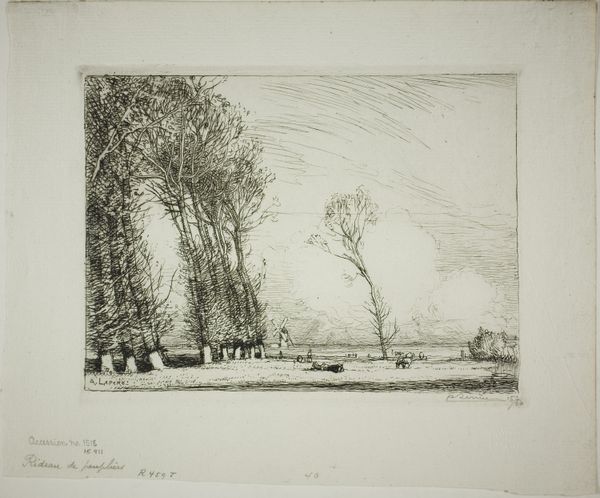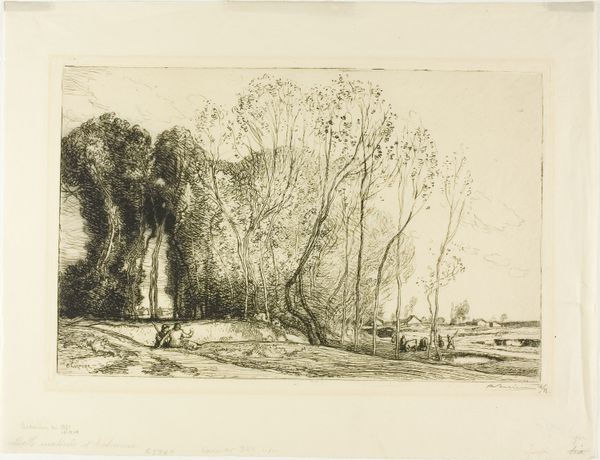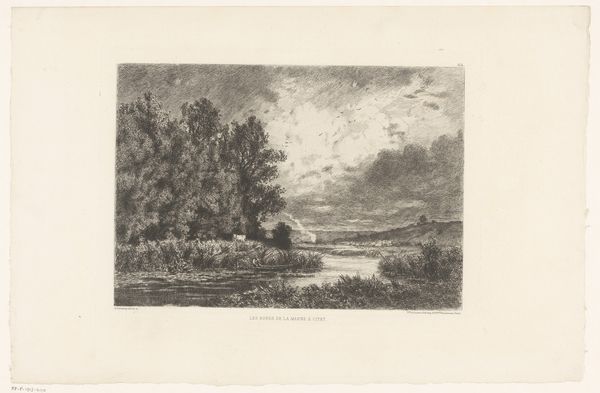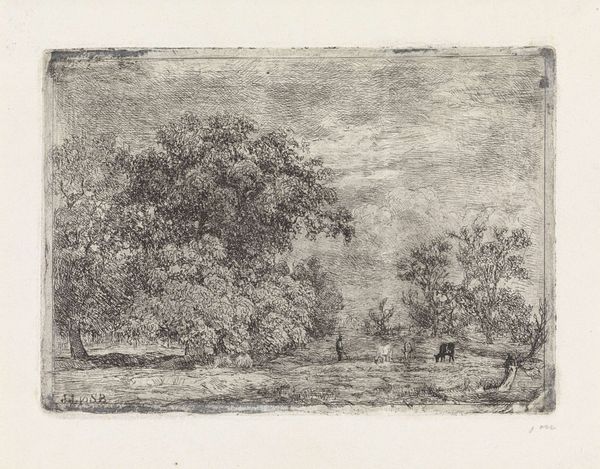
Landschap met bomen en drie grazende koeien 1845 - 1892
0:00
0:00
juliusjacobusvandesandebakhuyzen
Rijksmuseum
etching
#
dutch-golden-age
#
etching
#
landscape
#
realism
Dimensions: height 114 mm, width 160 mm
Copyright: Rijks Museum: Open Domain
Julius Jacobus van de Sande Bakhuyzen created this etching, titled *Landschap met bomen en drie grazende koeien*, in the Netherlands in the 19th century. This landscape, now in the Rijksmuseum, captures a serene moment of grazing cows beneath the shade of trees, presenting a picturesque scene that feels both intimate and expansive. In 19th-century Holland, landscape art was deeply intertwined with national identity, reflecting a pride in the Dutch countryside and its agricultural roots. Bakhuyzen's choice to depict grazing cows is no accident; it speaks to the economic and cultural significance of agriculture in Dutch society. Artists like Bakhuyzen found patronage through institutions and private collectors invested in celebrating Dutch heritage. To fully understand this work, art historians would consult agricultural records, period literature, and exhibition catalogues. By exploring these resources, we begin to see how the simple image of cows grazing tells a larger story about Dutch culture and values. This artwork is more than just a pretty picture; it is a snapshot of a society deeply connected to its land.
Comments
No comments
Be the first to comment and join the conversation on the ultimate creative platform.
